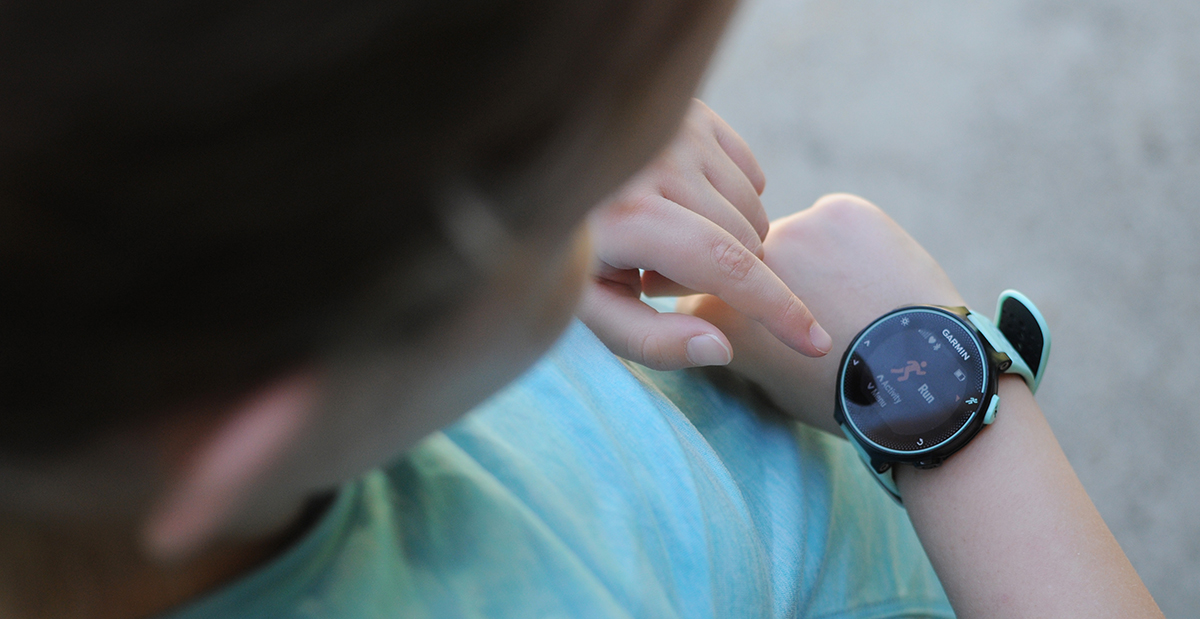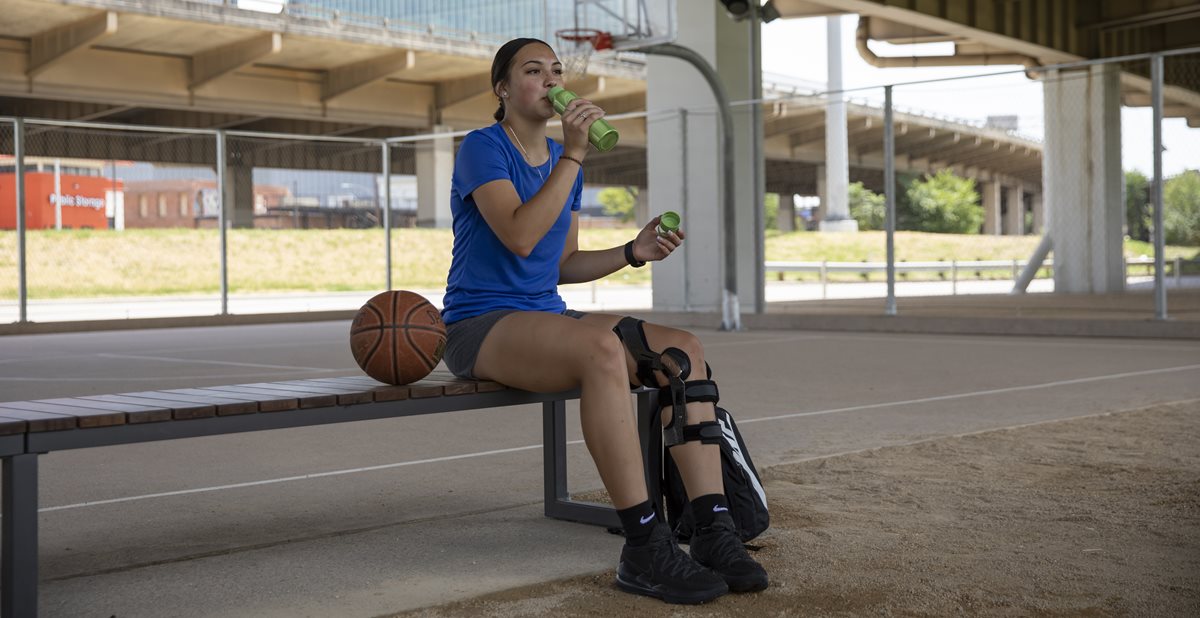
Jul 06, 2020 / Sports Medicine
Fitness Trackers: The Good, the Bad and the Big Picture
This article was previously written and published in the Pediatric Society of Greater Dallas newsletter.
In the last 10 years, wearable fitness trackers have gained a reputation as a good source for motivation and as a reminder to be more active primarily in the adult population. In the past five years, we’ve seen a shift in design and marketing products to appeal to school-aged kids.
As childhood obesity and physical inactivity remain challenging problems, many parents are looking for answers beyond nutrition to promote healthy choices. Parents view wearable fitness trackers as an effective way to keep their kids active and help them lose or maintain weight.
Print the PDF
Pros
Do Fitness Trackers Help Long Term?
With pros and cons considered, I would still consider that wearable technology is a good tool, but definitely not the answer to sustaining a heathy lifestyle. A fitness tracker cannot be a substitute for longer-term investments of creating a love for activity. This may be a harder sell for both parents and children as it takes planning, time and often a financial commitment to accomplish. For example, setting aside time and space to have free play, organized play, signing up for youth sports or fitness classes at a gym or sports performance outlet, and, most importantly, investing the time to seek your child’s interests so that money is conscientiously budgeted to accommodate those interests.
Introduction to Long-Term Athletic Development
As a physical therapist and activity enthusiast, I embrace the model for Long-Term Athletic Development (LTAD), conceived by Istvan Balyi (2013). LTAD concludes that the love for activity starts at 0-6 years old, but is achievable at any age. This model systematically presents movement concepts to the developing athlete, but the main goal is to institute a long-lasting effect on how a child views the benefits of physical fitness. It integrates coordination, social skills, gross motor skills, psychological emotions, imagination and leadership development. It also looks to engage the child in activities that he enjoys (free or unstructured play) versus activities mandated or defined by others. Most importantly, the learning from play is “wiring” the child to internalize the need for activity and motivation for future activities.
Even if a child is not particularly athletic, this model suggests that even the least motivated are still interested in an activity that promotes movement. “My son has athletics/PE once a day, so that’s not the problem.” I hear this in the physical therapy setting often and we would hope that the school systems are engaging them in physical play, right? Unfortunately, with reduction in time for physical education, relying on schools to enhance that movement is becoming less dependable—so it’s very hard to accept “at least they’re playing in PE.” The best way to make sure a child stays active is to identify and select activities that specifically appeal to your child, not made-for-everyone, “participation mandated” programming.
For those having difficulty finding a suitable activity for their child, wearable fitness trackers help to initiate activity. It may create momentum as they delve into internal components to establish a life-long love of fitness.
Laura Saleem, P.T., M.S., O.C.S., is a sports physical therapist at Scottish Rite for Children in Frisco.
In the last 10 years, wearable fitness trackers have gained a reputation as a good source for motivation and as a reminder to be more active primarily in the adult population. In the past five years, we’ve seen a shift in design and marketing products to appeal to school-aged kids.
As childhood obesity and physical inactivity remain challenging problems, many parents are looking for answers beyond nutrition to promote healthy choices. Parents view wearable fitness trackers as an effective way to keep their kids active and help them lose or maintain weight.
Print the PDF
Pros
- Fitness trackers can monitor steps taken, stairs climbed, hours stood, active minutes, workouts, calories expended and sleep.
- Some wearables also provide nutrition and activity guidance.
- Affordable versions appeal to many different populations.
- Pediatric wearables provide motivation with a game or unlocking a reward.
- Wearable fitness trackers are successful with an already active-minded or self-motivated child.
- Research studies show wearable fitness tracker compliance for moderate to vigorous activity to be around five weeks from initiation.
- Research studies show wearable fitness tracker compliance for moderate to vigorous activity to be around five weeks from initiation.
- Extrinsic motivation may not have long lasting effects on behavior change regarding physical activity.
- There is no guarantee that a fitness tracker will help your child lose weight or even be used.
- The games included on some fitness trackers are lackluster and poorly reviewed on products.
- Charging of these wearables is necessary every three to five days.
- Most lower cost wearables have to be paired with an app on a phone or tablet in order to view activity.
Do Fitness Trackers Help Long Term?
With pros and cons considered, I would still consider that wearable technology is a good tool, but definitely not the answer to sustaining a heathy lifestyle. A fitness tracker cannot be a substitute for longer-term investments of creating a love for activity. This may be a harder sell for both parents and children as it takes planning, time and often a financial commitment to accomplish. For example, setting aside time and space to have free play, organized play, signing up for youth sports or fitness classes at a gym or sports performance outlet, and, most importantly, investing the time to seek your child’s interests so that money is conscientiously budgeted to accommodate those interests.
Introduction to Long-Term Athletic Development
As a physical therapist and activity enthusiast, I embrace the model for Long-Term Athletic Development (LTAD), conceived by Istvan Balyi (2013). LTAD concludes that the love for activity starts at 0-6 years old, but is achievable at any age. This model systematically presents movement concepts to the developing athlete, but the main goal is to institute a long-lasting effect on how a child views the benefits of physical fitness. It integrates coordination, social skills, gross motor skills, psychological emotions, imagination and leadership development. It also looks to engage the child in activities that he enjoys (free or unstructured play) versus activities mandated or defined by others. Most importantly, the learning from play is “wiring” the child to internalize the need for activity and motivation for future activities.
Even if a child is not particularly athletic, this model suggests that even the least motivated are still interested in an activity that promotes movement. “My son has athletics/PE once a day, so that’s not the problem.” I hear this in the physical therapy setting often and we would hope that the school systems are engaging them in physical play, right? Unfortunately, with reduction in time for physical education, relying on schools to enhance that movement is becoming less dependable—so it’s very hard to accept “at least they’re playing in PE.” The best way to make sure a child stays active is to identify and select activities that specifically appeal to your child, not made-for-everyone, “participation mandated” programming.
For those having difficulty finding a suitable activity for their child, wearable fitness trackers help to initiate activity. It may create momentum as they delve into internal components to establish a life-long love of fitness.
Laura Saleem, P.T., M.S., O.C.S., is a sports physical therapist at Scottish Rite for Children in Frisco.



